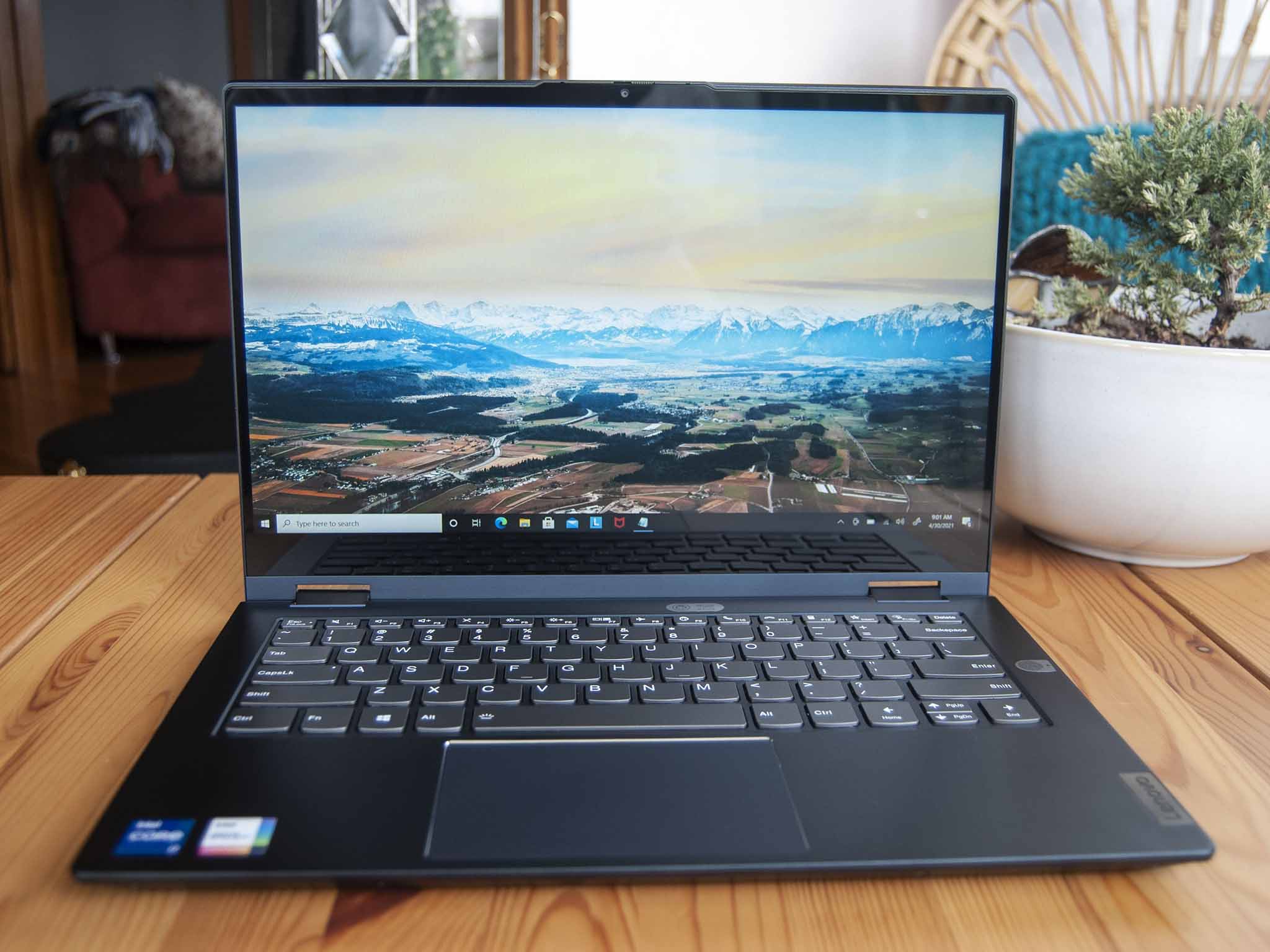
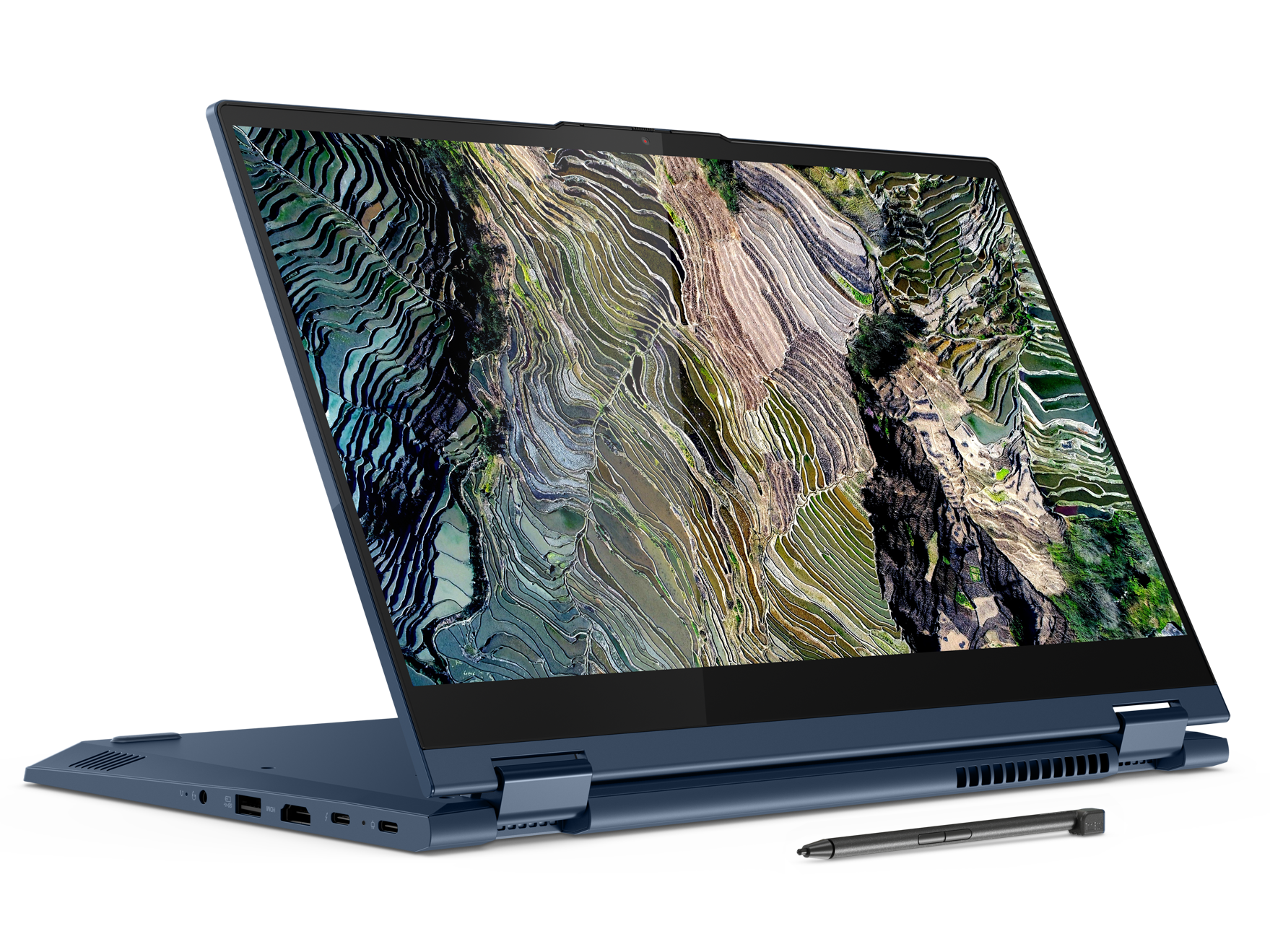
Modern Convertible
The ThinkBook 14s Yoga costs more than the standard ThinkBook 14 (Gen 2), but it adds a lot of versatility thanks to the included active pen and convertible design. It has a larger battery and comes with its own share of security features, making it a cost-effective ThinkPad competitor for those who love Windows 10 inking.
For
- 10+ hours battery life
- High-quality convertible build
- Garaged pen for inking is included
- Generous port selection
- 11th Gen Intel runs cool and quiet
Against
- Costs more than the ThinkBook 14 (Gen 2)
- Glossy display needs more brightness
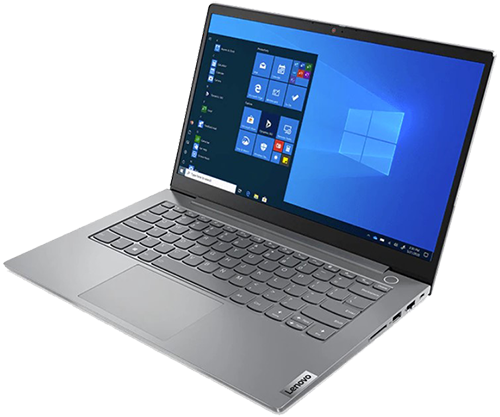
Modern Notebook
The ThinkBook 14 (Gen 2) costs less than the 14s Yoga, but it doesn't have the added versatility of a convertible build. It's still a low-cost ThinkPad alternative with good performance and generous port selection that will appeal to anyone who doesn't often use an active pen for inking.
For
- Costs less than the ThinkBook 14s Yoga
- Generous port selection
- All-aluminum build
- 11th Gen Intel CPUs for good performance
- Weighs a bit less
Against
- No convertible versatility
- Less battery life
These two laptops come from the same ThinkBook family, a cheaper alternative to the mighty ThinkPad. They might not be among the best Lenovo laptops of all time, but they're both solid Ultrabooks in their own right. Let's take a look at the two.
ThinkBook 14s Yoga vs. ThinkBook 14 (Gen 2) Specs
| Header Cell - Column 0 | ThinkBook 14s Yoga | ThinkBook 14 (Gen 2) |
|---|---|---|
| OS | Windows 10 HomeWindows 10 Pro | Windows 10 HomeWindows 10 Pro |
| Processor | 11th Gen IntelCore i5-1135G7Core i7-1165G7 | 11th Gen IntelCore i3-1115G4Core i5-1135G7Core i5-1145G7Core i7-1165G7 |
| RAM | DDR4-32008GB solderedUp to 40GB | DDR4-32004GB, 8GB solderedUp to 40GB |
| Graphics | Intel Iris XeIntegrated | Intel UHDIntel Iris XeIntegrated |
| Storage | Up to 1TB M.2 PCIe SSDExtra M.2 slot | Up to 512GB M.2 PCIe SSDExtra M.2 slot |
| Display | 14 inches1920x1080 (FHD)Touch, IPS16:9 aspect ratioGlossy, 300 nitsDolby Vision | 14 inches1920x1080 (FHD)16:9 aspect ratioAnti-glare250 nits (non-touch)300 nits (touch) |
| Pen | Integrated Smart Pen | None |
| Ports | USB-C 3.2 (Gen 2)Thunderbolt 4HDMI 1.4bTwo USB-A 3.2 (Gen 1)3.5mm audiomicroSD card reader | USB-C 3.2 (Gen 2)Thunderbolt 4HDMI 1.4bTwo USB-A 3.2 (Gen 1)3.5mm audioSD card readerRJ45 Ethernet |
| Audio | Dual 2W speakersDolby Audio | Dual 2W speakersDolby Audio |
| Connectivity | Wi-Fi 6Bluetooth 5.1 | Wi-Fi 6Bluetooth 5.0 |
| Camera | Front-facing 720pThinkShutter | Front-facing 720pThinkShutter |
| Security | TPM 2.0Fingerprint readerKensington Nano lock slotWebcam shutter | TPM 2.0Fingerprint readerKensington Nano lock slotWebcam shutter |
| Battery | 60Wh | 45Wh |
| Dimensions | 12.60 x 8.62 x 0.67 inches(320mm x 216mm x 16.9mm) | 12.72 x 8.58 x 0.7 inches(323mm x 218mm x 17.9mm) |
| Weight | 3.3 pounds (1.5kg) | 3.09 pounds (1.4kg) |
| Color | Mineral GreyAbyss Blue | Mineral Grey |
| Material | AluminumMIL-STD 810H testing | AluminumMIL-STD 810H testing |
Design and features
These ThinkBook laptops have one major difference when it comes to design. The Yoga version is a convertible, meaning it has hinges that allow the lid to fold around 360 degrees. You can use the Yoga PC as a tablet, notebook, or something in between with tent and stand modes. The ThinkBook 14, on the other hand, is strictly a notebook with hinges that allow the lid to open no farther than 180 degrees.
Both laptops are made from aluminum and come with MIL-STD 810H certification to ensure they can stand up to the use and abuse associated with a business laptop. If you often travel or need to take your laptop into the field, they should fare well thanks to testing against dust, temperature, shock, and more. The Yoga version comes in Mineral Grey and Abyss Blue colors, while the ThinkBook 14 is available only with the former finish. I recommend going with Mineral Grey, as the other color is a fingerprint trap that shows every smudge.
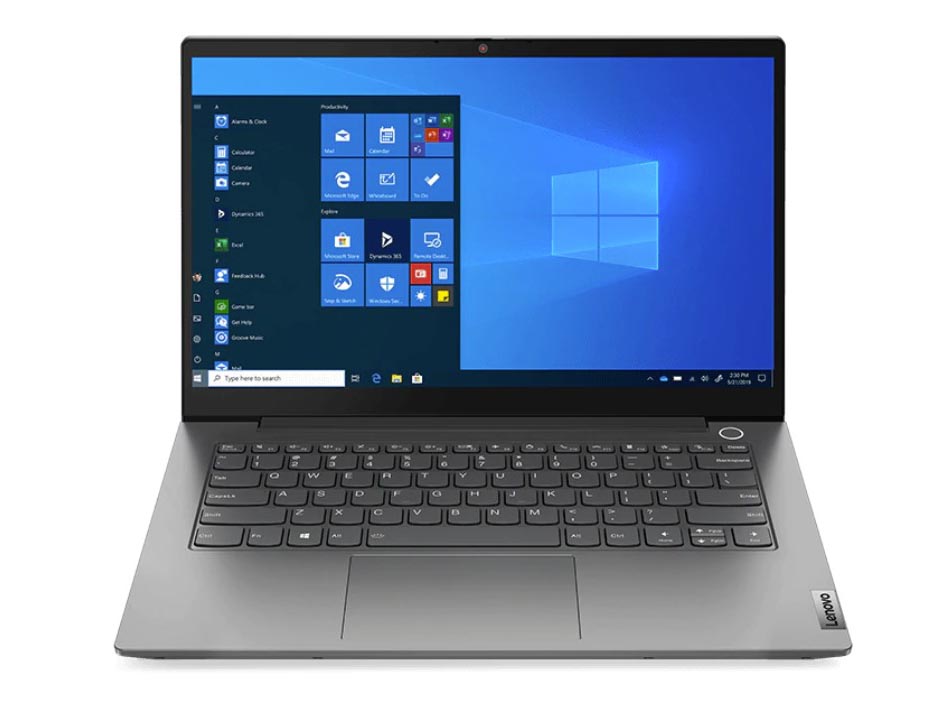
Ports are nearly the same, with both laptops benefitting from Thunderbolt 4, HDMI, USB-C, and USB-A. However, only the non-Yoga model has RJ45 Ethernet and an SD card reader. You can always add one of the best Thunderbolt 4 hubs and docking stations to the Yoga to get those extra ports. Both laptops have a fairly plain front-facing 720p camera, and both have dual 2W speakers for sound that's about average for laptops in this size and price range.
The ThinkBook series is a more affordable alternative to the ThinkPad line, but it still brings some extra security features from which small businesses can benefit. Both laptops have a fingerprint reader, webcam shutter, Kensington Nano lock slot, and TPM 2.0 chip.
As for typing and pointing, you're going to get about the same experience from both devices. The keyboard on these PCs isn't quite as comfy as a ThinkPad's, but you should find its travel is still enough to promote productivity. Just watch out for the key layout that has Home, End, Insert, and Page keys doubled up and accessible with the Fn key. Both laptops have Mylar Precision touchpads that work well.
Display and inking
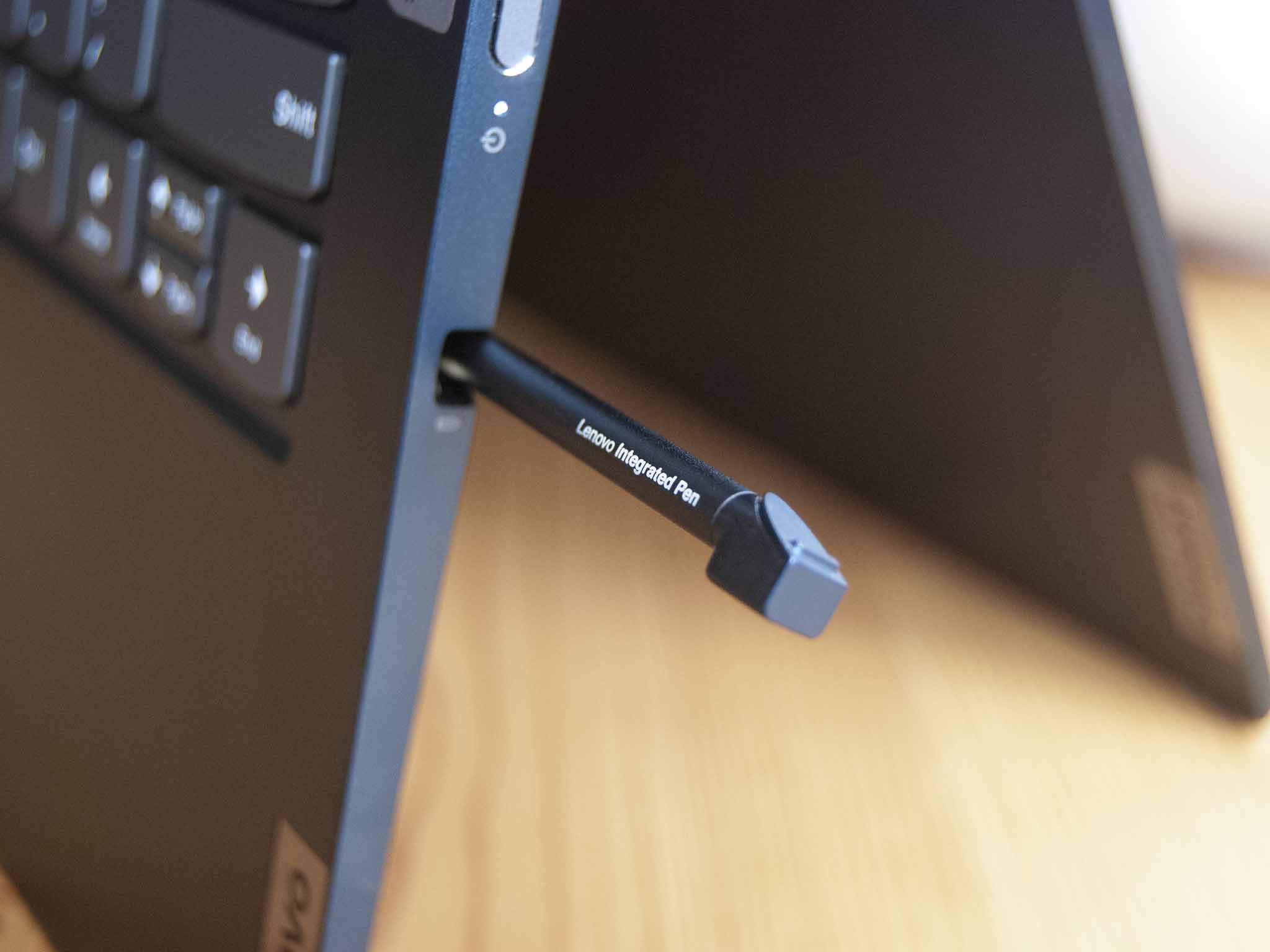
The display plays a major role in the Yoga's overall appeal. There is a single-touch display option with 1920x1080 (FHD) resolution, IPS panel, about 300 nits brightness, 16:9 aspect ratio, and glossy finish. It offers accurate sRGB color (100% tested with our colorimeter), but it lacks enough brightness to completely offset the glossy coating. Going with an anti-reflective finish would have helped a lot here. At least Dolby Vision is included to get the most out of compatible HDR content.
Get the Windows Central Newsletter
All the latest news, reviews, and guides for Windows and Xbox diehards.
The ThinkBook 14 has a few more display options available, but none are much better than the Yoga's option. Resolution still tops out at FHD and brightness hits just 300 nits, though the finish is anti-glare instead of glossy. You can get touch or non-touch, with up to 100% sRGB color reproduction. If you're often working in well-lit spaces, the anti-glare ThinkBook 14 display is probably the best choice. However, it's not capable of inking, one of the Yoga's hallmark features.
The ThinkBook 14s Yoga has an integrated active pen built into its side. The rechargeable pen sits unobtrusively until it's needed, offering up 4,096 levels of pressure sensitivity and two customizable buttons. The pen works with the laptop at any time, but it shines when you rotate the display around for tablet mode. The standard ThinkBook 14 does not offer inking support.
Price and availability
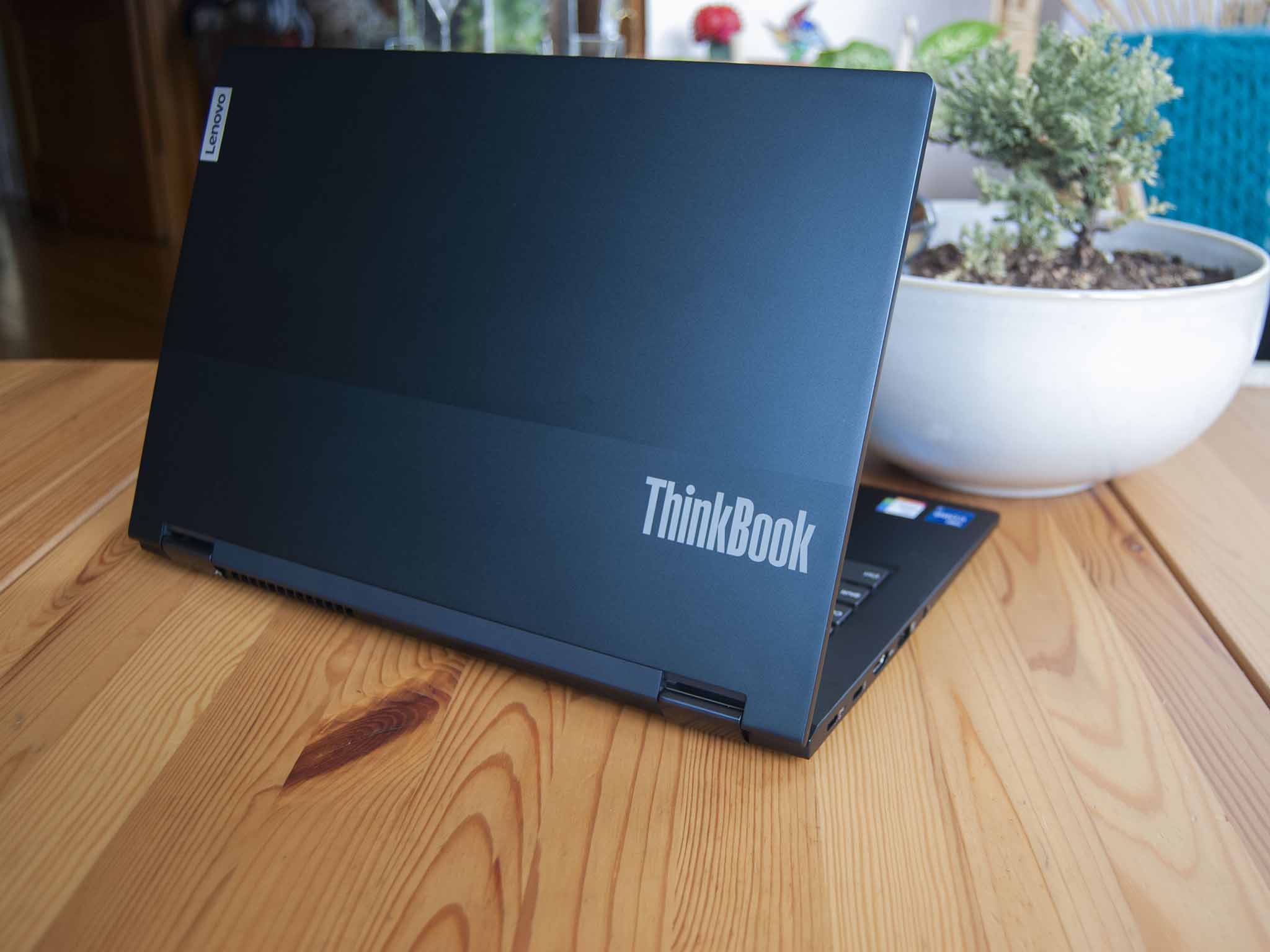
Both laptops employ 11th Gen Intel Core CPUs for snappy modern performance. The Yoga model can be had with Core i5 or Core i7, while the standard ThinkBook 14 is sometimes available with Core i3 as well. Similarly, the Yoga starts with 8GB of RAM soldered to the board, whereas the 14 can have either 4GB or 8GB soldered to the board. Both laptops have an extra SODIMM slot for future RAM upgrades. Both laptops also have dual M.2 PCIe NVMe slots, with up to 1TB in the Yoga and 512GB in the non-convertible. Our guide on how to upgrade the SSD in Lenovo's ThinkBook 14s Yoga can walk you through the process if you need more storage. Steps are similar for both models.
The ThinkBook 14 (Gen 2) is the more affordable option between these two laptops.
The ThinkBook 14s Yoga comes standard with a 60Wh battery that in our testing hit around 11 hours of life. The ThinkBook 14 has a smaller 45Wh battery as standard, though you might be able to find some configurations with the larger 60Wh hardware. With the smaller battery, expect to shave a few hours off the total life. Still, you should expect at least eight hours from the non-Yoga version.
Due to the lack of mandatory touch display, integrated pen, and convertible design, the ThinkBook 14 (Gen 2) starts at a much more reasonable price than the Yoga. A model with Core i5-1135G7 CPU, 8GB RAM, 256GB SSD, and 14-inch FHD non-touch display with 250 nits brightness costs about $754 after a generous Lenovo coupon.
The ThinkBook 14s Yoga with Core i5-1135G7 CPU, 8GB of RAM, 512GB SSD, and 14-inch FHD touch display with 300 nits brightness costs about $968 after a similar coupon discount. You get more laptop going the way of the Yoga, but it will cost more even when performance hardware is on par. If neither of these devices is really what you're looking for, our collection of the best Windows laptops has way more hardware to browse.
Go with the Yoga version if you love inking
The ThinkBook 14s Yoga is the right choice for anyone who wants a convertible laptop with included active pen for inking. It's a lot more versatile than the standard ThinkBook 14, plus its battery is larger. Just watch out for the glossy display and lack of Ethernet port or SD card reader.

If you love the idea of a convertible PC with built-in active pen, the ThinkBook 14s Yoga will be worth the extra money.
The ThinkBook 14 is a more affordable alternative
Don't need a convertible laptop with inking support? The standard ThinkBook 14 (Gen 2) costs less and comes with similar performance. It also has more ports and more display options, including screens with anti-glare finish.

Cale Hunt brings to Windows Central more than eight years of experience writing about laptops, PCs, accessories, games, and beyond. If it runs Windows or in some way complements the hardware, there’s a good chance he knows about it, has written about it, or is already busy testing it.
